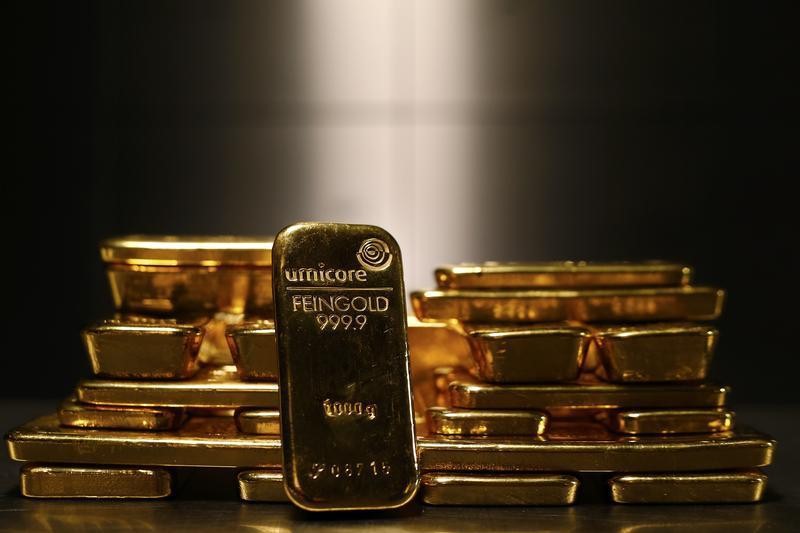Investing.com – Gold was back on track to being a hedge to the trade war on Monday after talk of Beijing’s anxiety over President Donald Trump’s impeachment proceedings pricked the prospective U.S.-China trade bubble.
Both bullion and futures of gold recovered from their Friday dip to attempt a return to the $1,480 mark and the bigger $1,500 target as a risk-off mode prevailed across markets. Wall Street indices, however, set new highs after the Trump administration granted a 90-day extension for U.S. companies to continue doing business with Chinese tech giant Huawei.
Gold futures for December delivery on New York’s COMEX settled up $3.40, or 0.2%, at $1,471.90 an ounce.
Spot gold, which tracks live trades in bullion, was up $4.16, or 0.3%, at $1,471.28 by 2:45 PM ET.
The pop in gold came after CNBC cited a source in China as saying that Beijing was of a mind not to make any further concessions in talks in the near term, and that they preferred to wait and see how the impeachment proceedings against President Donald Trump played out.
If substantiated, that would reduce the odds of the phase one trade deal that both sides have publicly talked up, but repeatedly pushed back due to reported differences over issues ranging from tariffs to intellectual property rights.
“There was an impression on Friday that the trade talks were headed for a constructive path, but then that’s fallen through with the latest pessimism expressed by the Chinese,” Eric Scoles, precious metals strategist at RJO Futures in Chicago, said.
“Really, the back-and-forth of the trade talks is all that’s yanking gold around. The bulls, of course, want to get the market back to $1,480, though $1,475 seems to be the resistance now.”
Gold fell last week after Commerce Secretary Wilbur Ross and White House economic adviser Larry Kudlow suggested that the U.S. and China were closing in on a deal, sending all three major stock indexes on Wall Street to record highs.
Gold fell off the more important $1,500 perch earlier this month after Federal Reserve Chairman Jerome Powell suggested that the U.S. central bank’s third straight rate cut of a quarter point in October would be its last for the year.
